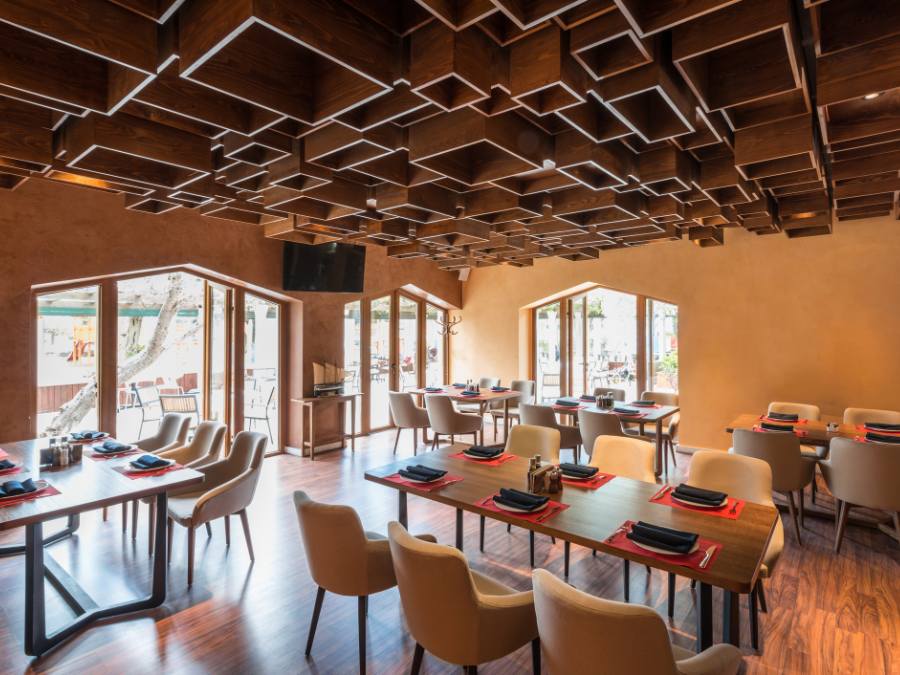The ambiance of a restaurant is almost as important as the food. A well-thought-out interior design can dramatically enhance the dining experience, encourage repeat customers, and even attract new ones through word of mouth and social media shares. If you’re thinking about giving your restaurant a makeover, staying abreast of the latest design trends and practical refurbishing tips is essential. Here’s how you can create a space that not only looks great but also resonates with your clientele.
1. Minimalist Elegance
Simplicity is key in modern restaurant design. A minimalist approach creates a clean, organized environment that emphasizes the dining experience without overwhelming distractions. Opt for neutral palettes with accents in colors like deep green, indigo, or burnt orange to add warmth and sophistication. Furniture should be functional yet stylish, with clean lines and understated fabrics. The minimalist trend also makes smaller spaces appear larger, offering a sense of luxury and calm.
2. Eco-friendly Designs
Sustainability is a major focus in the restaurant industry, influencing everything from food choices to interior materials. Incorporate eco-friendly practices by using recycled materials, sustainable woods, and energy-efficient lighting. Decorate with live plants to improve air quality and add a touch of nature’s own decor. Biophilic design not only connects your guests with nature but also showcases your commitment to the environment—a growing concern among consumers.
3. Dynamic Lighting Solutions
Lighting plays a crucial role in setting the mood. Use a combination of ambient, task, and accent lighting to create the right atmosphere at different times of the day. Adjustable and smart lighting systems allow you to change the brightness and colors based on the time and type of service, such as a bright, cheerful setting for brunch and a dim, intimate glow for evening dining. Innovative lighting fixtures can also serve as art pieces, adding to the aesthetic appeal.
4. Incorporating Local Art and Elements
Personalize your space by incorporating elements that reflect the local culture or history. This can include artwork from local artists, historical decor items, or design themes related to your location. This not only makes your restaurant stand out but also strengthens community ties and supports local talent. Customers appreciate a sense of place, which can be achieved by reflecting the neighborhood’s vibe and heritage.
5. Open Layouts and Modular Furniture
As social distancing becomes a norm, consider open layouts that allow for flexible seating arrangements. Modular furniture can be easily moved or adjusted to accommodate different group sizes or to change the layout for private events. Open kitchens are also popular, as they add transparency to the food preparation process and provide a live culinary show that guests enjoy.
6. Technology Integration
In today’s digital age, integrating technology into your restaurant’s design can enhance operational efficiency and customer satisfaction. Consider areas for customers to charge their devices, use digital menus that can be updated in real-time, or interactive tables where guests can order directly from a touchscreen. Technology should blend seamlessly with the decor, maintaining the design aesthetic while adding functional value.
7. Comfort with a Touch of Luxury
Finally, comfort should never be compromised for style. Invest in high-quality seating that offers comfort for extended periods, ensuring that guests feel relaxed throughout their meal. Adding elements of luxury like plush upholstery, elegant table settings, or unique handcrafted decor can elevate the dining experience, making it memorable and enjoyable.
Revamping your restaurant’s interior is an exciting opportunity to breathe new life into your business. By following these trends and tips, you can create a space that not only looks modern and inviting but also enhances the overall dining experience. Remember, the goal is to create an environment where customers feel comfortable, engaged, and eager to return.


